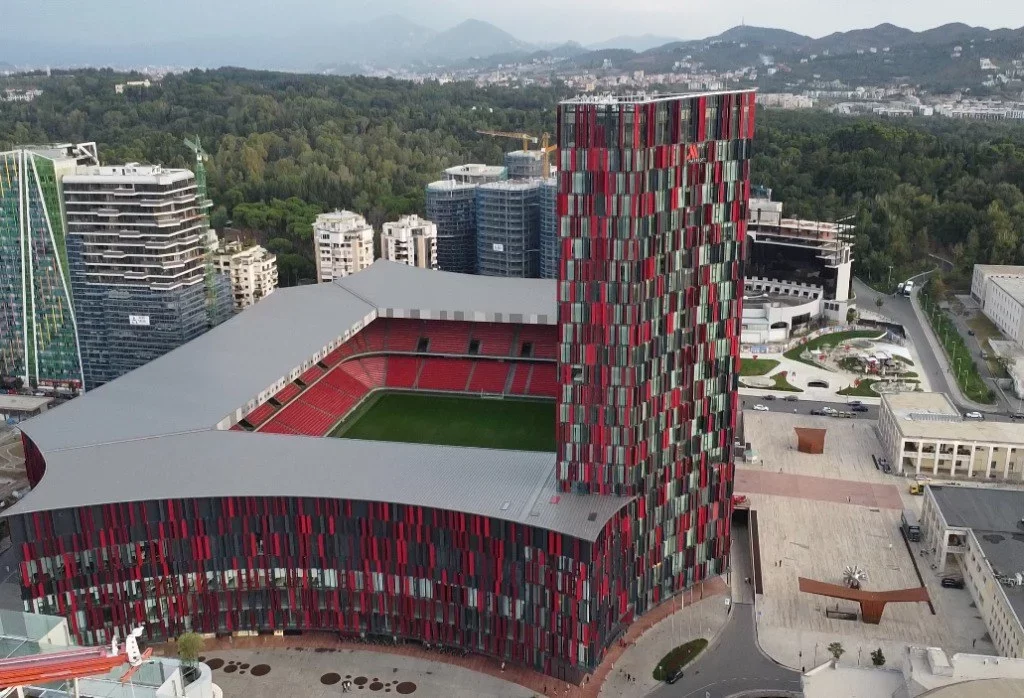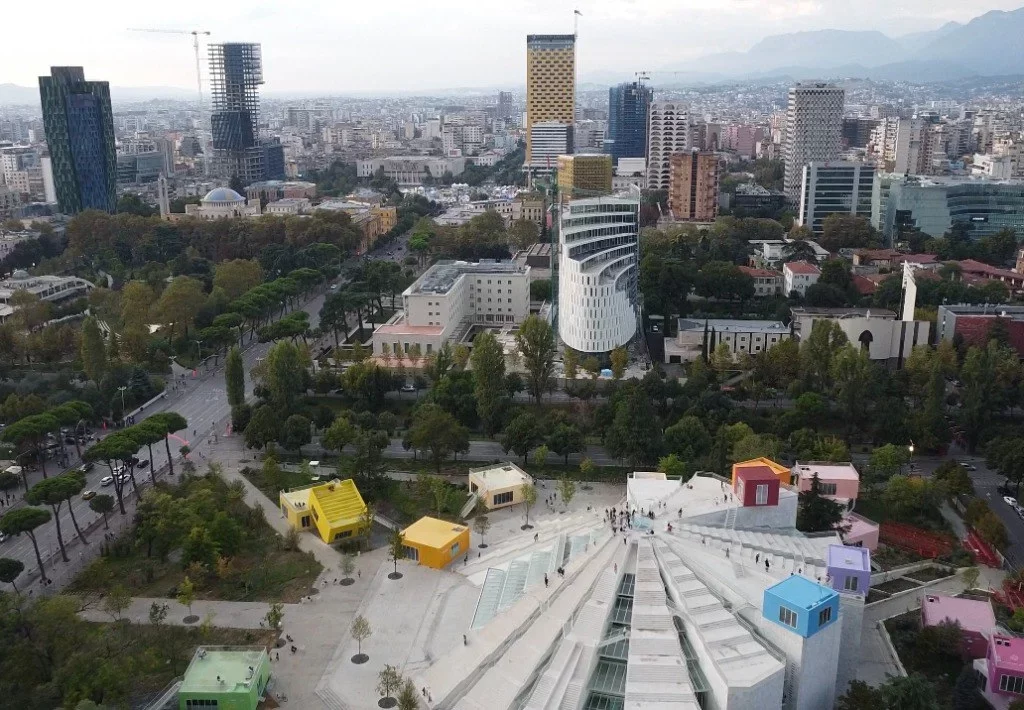

Tirana[c] (/tɪˈrɑːnə/ ⓘ tih-RAH-nə,[9][10] Albanian pronunciation: [tiˈɾana]; Gheg Albanian: Tirona) is the capital and largest city of Albania. It is located in the centre of the country, enclosed by mountains and hills with Dajti rising to the east and a slight valley to the northwest overlooking the Adriatic Sea in the distance. It is among the wettest and sunniest cities in Europe, with 2,544 hours of sun per year.[11][12]
Tirana was founded as a city in 1614 by the Ottoman Albanian general Sylejman Pasha Bargjini and flourished by then around the Old Mosque and the türbe. The area that today corresponds to the city’s territory has been continuously inhabited since the Iron Age. It was inhabited by Illyrians, and was most likely the core of the Illyrian Kingdom of the Taulantii, which in Classical Antiquity was centred in the hinterland of Epidamnus. Following the Illyrian Wars it was annexed by Rome and became an integral part of the Roman Empire. The heritage of that period is still evident and represented by the Mosaics of Tirana. Later, in the 5th and 6th centuries, an Early Christian basilica was built around this site.
After the Roman Empire split into East and West in the 4th century, its successor the Byzantine Empire took control over most of Albania, and built the Petrelë Castle in the reign of Justinian I. The city was fairly unimportant until the 20th century, when the Congress of Lushnjë proclaimed it as Albania’s capital, after the Albanian Declaration of Independence in 1912.
Classified as a gamma-world-city,[citation needed] Tirana is the most important economic, financial, political and trade centre in Albania due to its significant location in the centre of the country and its modern air, maritime, rail and road transportation.[13] It is the seat of power of the Government of Albania, with the official residences of the President and Prime Minister of Albania, and the Parliament of Albania. The city was announced as the European Youth Capital for 2022.
The area of Tirana has been inhabited by humans since prehistoric times with the earliest recognised reference found at the Cave of Pëllumbas belonging to the Palaeolithic period. Illyrians were the first population of the area and formed most likely the core of the Illyrian kingdom of the Taulantii, which in classical antiquity was centered in the hinterland of Epidamnus.[14] When the Romans arrived in Illyria after their victory of the Illyrian Wars, they populated and integrated the area into their empire under the political control of the city of Rome. The oldest surviving discovery from this period is a Roman house dating to the 3rd century, which was transformed into an aisleless church with a mosaic floor. A castle, possibly known as Tirkan, was built by the Byzantine Emperor Justinian I between the 4th and 6th century and later restored by Ahmed Pasha Toptani in the 18th century.[15]
Tirana is mentioned in Venetian documents in 1418, one year after the Ottoman conquest of the area: “…the resident Pjeter, son of late Domenik from the village of Tirana…”.[16] Records of the first land registrations under the Ottomans in 1431–32 show that Tirana consisted of 60 inhabited areas, with nearly 2,028 houses and 7,300 inhabitants.[citation needed] In 1510, Marin Barleti, an Albanian Catholic priest and scholar, in the biography of the Albanian national hero Skanderbeg, Historia de vita et gestis Scanderbegi Epirotarum principis (The story of life and deeds of Skanderbeg, the prince of Epirotes), referred to this area as a small village, distinguishing between “Little Tirana” and “Great Tirana”.[16] It is later mentioned in 1572 as Borgo di Tirana.[17]
According to Hahn, the settlement had already started to develop as a bazaar and included several watermills,[18] even before 1614, when Sulejman Bargjini, a local ruler, built the Old Mosque, a small commercial centre, and a hammam (Turkish bath). This is confirmed by oral sources, which state that there were two earlier mosques 300–400 m from the Old Mosque, towards today’s Ali Demi Street. The Mosque of Reç and the Mosque of Mujo were positioned on the left side of the Lana river and were older than the Old Mosque.[18] Later, the Et’hem Bey Mosque, built by Molla Bey of Petrela, was constructed. It employed the best artisans in the country and was completed in 1821 by Molla’s son Etëhem, who was also Sulejman Bargjini’s great-nephew.
In 1800, the first newcomers arrived in the settlement[clarification needed], the so-called ortodoksit. They were Aromanians from villages near Korçë and Pogradec, who settled around modern day Tirana Park on the Artificial Lake.[19] They started to be known as the llacifac and were the first Christians to arrive after the creation of the town.[20] In 1807, Tirana became the centre of the Subprefecture of Krujë-Tirana.[citation needed] After 1816, Tirana languished under the control of the Toptani family of Krujë.[citation needed] Later, Tirana became a sub-prefecture of the newly created Vilayet of Shkodër and the Sanjak of Durrës. In 1889, the Albanian language started to be taught in Tirana’s schools,[citation needed] and the patriotic club Bashkimi was founded in 1908.
